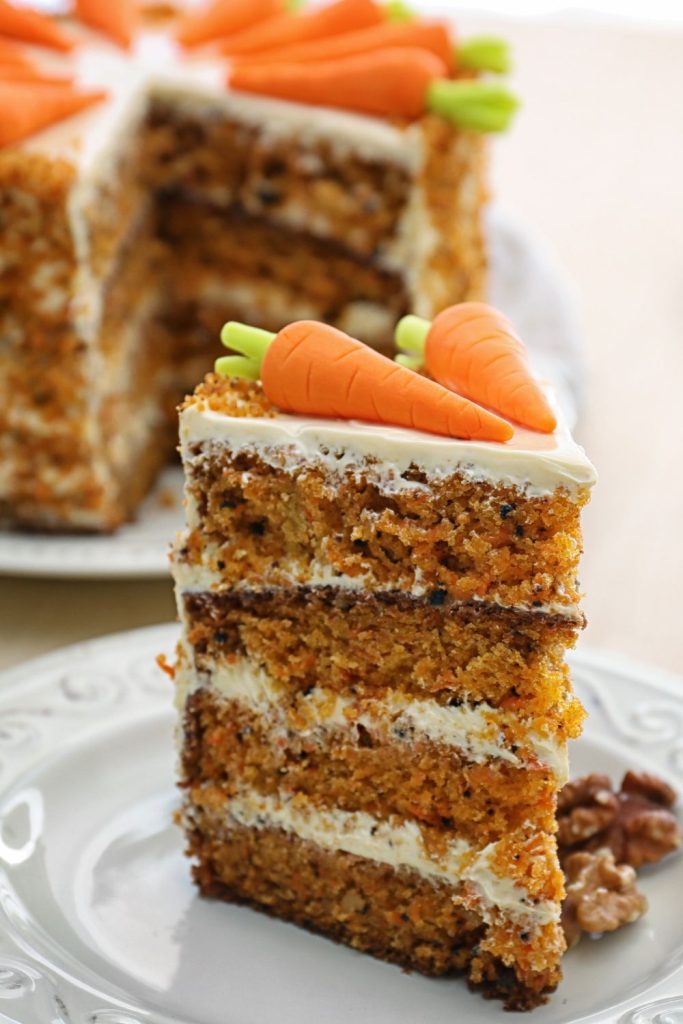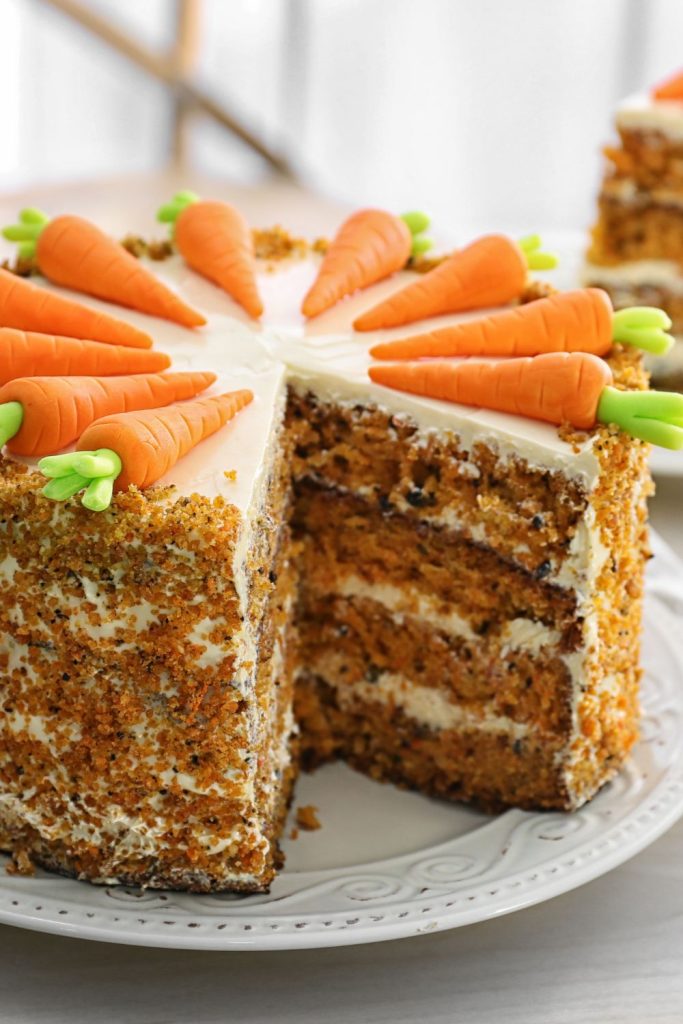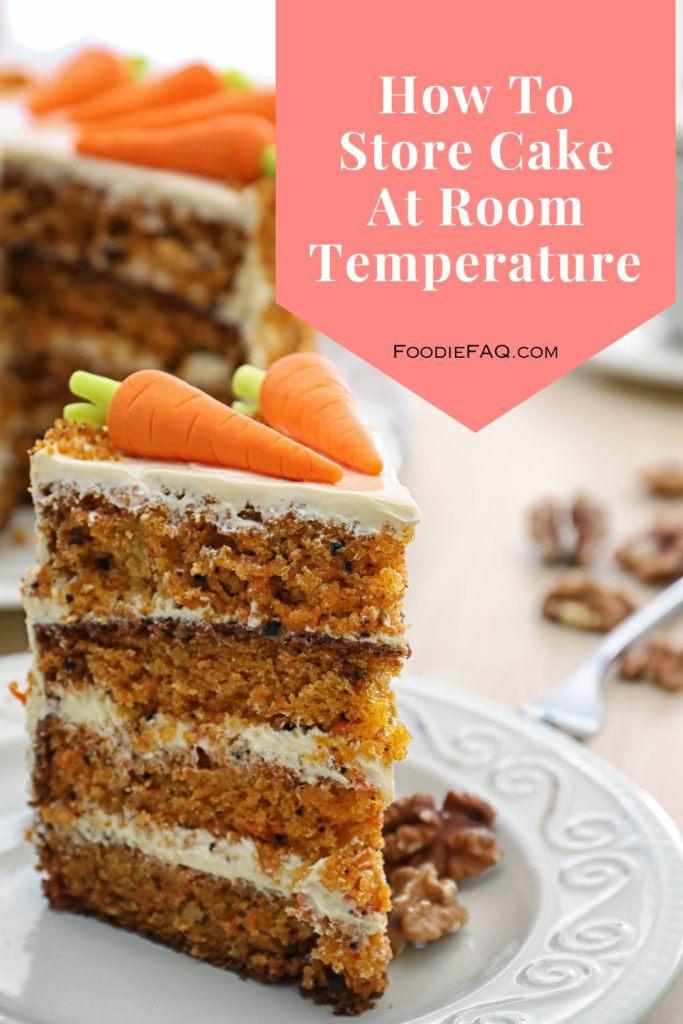Just today, I ate some leftover cake. It was so delicious, and it was even better because we had stored it at room temperature.
Because we hadn’t stored the cake in the fridge, the frosting was the perfect creamy texture that I love, and the cake was fluffy and delicious.
While it isn’t always possible because it varies wildly depending on the type of cake, I for sure prefer cake that has been stored at room temp.
So today, you are gonna learn our secrets for how to store cake at room temperature. Now, before we get into those details, you first need to know what kind of shape your cake is currently in. Is that cake still good or not?
Let’s dive in.

How To Know If Cake Is Still Fresh
To determine if your cake is still fresh, do a visual inspection to verify that it isn’t moldy. Then, check the texture to see if it is still moist and doesn’t have a dry or crumbly texture. Next, give it a good sniff. A fresh cake should smell sweet and pleasant. Finally, if the cake is slimy, it has likely gone bad.
Look for these signs:
- The cake has a pleasant smell. Any sour or off-putting odors suggest it’s time to toss it.
- The texture is still soft and moist. If it’s hard or overly crumbly, it’s past its prime.
- There’s visible mold. This is a clear indicator that the cake is no longer safe to eat.
How To Store A Cake Without It Drying Out
The most important thing that you can do to store a cake without it drying out is to cover it. You can wrap it in plastic wrap or aluminum foil. It is also a great idea to use a cakekeeper storage container. Using a storage container that is made for cakes will keep you from messing up any designs in the frosting.
To prevent your cake from drying out, follow these steps:
- Keep it covered: Use a cake dome or an overturned bowl to protect it from air exposure.
- Frost the cake right away.
- Cut slices from the middle: Instead of cutting slices from the edge, cut them from the middle and push the remaining halves together. This keeps the inside from drying out.
My favorite way to keep a cake from drying out is to eat it right away.
What Is The Shelf Life Of Cake
The shelf life of a cake depends on its ingredients and how it’s stored. Most cakes can last up to 5 days at room temperature, while refrigerated cakes can last up to seven days. However, cakes with cream or custard fillings should be eaten within a day or two. If you freeze the cake, it can last up to six months.
- Unfrosted cakes: 5 days at room temperature.
- Frosted cakes: Depending on the filling, 5 days in the fridge.
- Custard-filled cakes: Depending on the filling, 2 days in the fridge.
How long a cake will last really varies wildly depending on the type of cake. For example, a fruit cake can last up to three months in the refrigerator. So, the safest bet is to follow the steps above to decide if your cake is still good or not.

Storing Cake At Room Temperature
Storing cake at room temperature is only appropriate for cakes that don’t have cream or custard fillings. Keep the cake in a cake box or under a cake dome to protect it from drying out and going stale. Most cakes can last 2-5 days at room temperature. This is only true if you store it properly, though.
1. Assess the Ingredients:
Before storing, determine the ingredients of your cake. Cakes with perishable fillings or frostings like cream cheese, whipped cream, or custard should be refrigerated. On the other hand, cakes made without perishable toppings or custards can safely be stored at room temperature for a short time.
2. Use a Cake Dome or Cake Stand with a Cover:
A cake dome is not just for looks—it’s one of the most effective ways to keep your cake fresh.
- Place your cake on a cake stand or plate.
- Cover with a cake dome.
3. Covering with Foil or Plastic Wrap:
If you lack a cake dome or airtight container:
- If your cake is unfrosted, you can wrap it directly in plastic wrap and then wrap it with aluminum foil.
- If it’s frosted, insert toothpicks around the top of the cake, and then loosely drape the plastic wrap over the toothpicks to avoid the frosting sticking to the wrap. Then, wrap that in aluminum foil.
5. Store in a Cool, Dry Place:
Always store the cake away from direct sunlight or any heat source to prevent the melting of frosting or butter in the cake, which can make it go rancid.
6. Keep Away from Strong Odors:
Cakes can absorb strong odors. Always store your cake away from strong-smelling foods and substances. Basically, don’t store your cake in the same space where you are storing your onions, as an example.
7. Consume Quickly:
Even when stored correctly at room temperature, cakes should ideally be consumed within 1-3 days for the best taste and texture. As days go by, the risk of it drying out or becoming stale increases. Besides, eating it is the fun part.

If You’ve Already Cut Your Cake
Quick Tip: Press a piece of plastic wrap or bread against the cut side. This prevents air from drying out the cake and can help keep it moist.
Avoid These Common Cake Storage Mistakes
- Don’t refrigerate cakes unnecessarily. Unless it has a perishable filling, a cake is often better stored at room temperature.
- Don’t store a cake before it’s completely cooled. This can lead to condensation and make the cake soggy.
The bottom line
Proper cake storage is crucial for maintaining its flavor and texture. Whether you’re storing it at room temperature, in the fridge, or in the freezer, remember to keep it well-covered to protect it from air exposure. With these tips, you can enjoy your delicious cake for days (or even months) after baking it.

